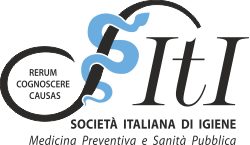The hypothesis
The hypothesis that ethylmercury, a metabolite of thimerosal, a preservative used in vaccination preparations, may be harmful to the child's nervous system, stems from some studies on the link between possible minor neuropsychological developmental defects in children detected by specific intelligence tests and methylmercury levels in their mothers caused by a diet rich in large fish during pregnancy1-2. Although a further study on the same topic performed in the Seychelles islands did not confirm this link3-4, and although methylmercury is a different compound from ethylmercury, a series of studies have been carried out over the years on the effect of vaccinations on the neuropsychological development of the child. Among the associations reported were autism, ADHD and mental and language delays5-9.
Scientific elements that refute a causal relationship between the mercury contained in some vaccines and defects in the neuropsychological development of the child
Mercury is an element widely present in the world, found in water, soil, plants and animals. Methylmercury is an organic compound of mercury and is neurotoxic in high quantities; it is ingested by humans mainly through food from the marine environment. The levels of ingestion deemed safe are regulated. The ethylmercury derived from the thimerosal contained in vaccines is a different compound from methylmercury, taken in a different way (parenterally), at a lower dose than the intake indicated in the studies on methylmercury, and intermittently and not constantly as in those studies. Several studies indicate that ethylmercury is eliminated more quickly from the human and animal organism, and is less neurotoxic10-12. Pending definitive data on the differences in their metabolism and their toxicity, in the risk assessment the two compounds were considered equivalent, and the safety levels for exposure to ethylmercury were derived from those of methylmercury.
Early studies on the topic had a wide resonance in the scientific community, leading the main bodies involved in health protection to review the available data on the safety of childhood vaccines and on the possible adverse neurological events and effects on neuropsychological development.
In 1999, the FDA conducted a review of the available data showing the lack of evidence of damage related to the amounts of thimerosal contained in childhood vaccines, with the exception of local hypersensitivity reactions13. Although the cumulative exposure to mercury from vaccines, considering the schedule of recommended vaccinations, was within the limits of methylmercury exposure guidelines, the FDA concluded that there was however the possibility that, based on the type of vaccine formulation used and the weight of the infant, some infants could be exposed in the first 6 months of life to cumulative levels of mercury above the safe level indicated for methylmercury. In 2001 the Immunization Safety Review Committee (IOM's), reviewing the available data, also concluded that there was insufficient evidence to confirm or rule out that thimerosal could cause autism, ADHD and language delays14. Therefore, between the late 1990s and the early 2000s, as a precaution, the main bodies involved in health protection (WHO, EMEA and FDA) recommended that vaccine manufacturers remove or reduce traces of thimerosal in vaccines for children under the age of 6, with the exception of flu vaccines15-17. Since then, numerous studies on the subject have been carried out.
Initially, it was hypothesised that children could have difficulty in eliminating mercury. Studies at the University of Rochester and the National Naval Medical Center in Bethesda examined the levels of mercury contained in different samples taken from infants and newborns, including those premature and with low birth weight, vaccinated with thimerosal-containing vaccines18-20. Blood mercury levels did not exceed the safety levels indicated in the guidelines for methylmercury. These studies have confirmed that differences in the distribution, metabolism, and excretion of ethylmercury and methylmercury are likely to exist.
In 2003 the results of several studies conducted in Denmark and Sweden, where autism rates continued to increase despite thimerosal having been removed from vaccines as early as 1992, did not demonstrate the previously-mentioned link between thimerosal-containing vaccines and autism21 -23. The lack of this association was also documented by a retrospective study by the CDC published in 2003 and a study carried out in the United Kingdom and published in 200424-25. Furthermore, in 2004, a review of the studies on this topic, identified several potential uncontrolled biases in studies indicating a link between thimerosal and autism26. In the same year, after reviewing more than 200 scientific studies that investigated the relationship between thimerosal-containing vaccines and autism, including new scientific evidence, IOM concluded that the studies provided sufficient evidence that there is no link between the two27.
The association between thimerosal and neuropsychological developmental disorders other than autism has also been assessed in numerous studies. The 2003 retrospective study by the CDC, which examined a large database of American children, provided inconclusive results, detecting only slight associations with tics and language delays24. The link with tics was confirmed by the UK study25, while another English study reported a reduction in tics linked to exposure to thimerosal28.
Regarding the association between thimerosal-containing vaccines and the onset of attention-deficit hyperactivity disorder (ADHD), English studies went so far as to report a protective effect25-28.
In 2002 the CDC allocated funds for two studies, one American and one Italian which used specific neuropsychological tests to evaluate 7 to 12 year-olds who had been exposed to thimerosal during childhood. These studies did not show coherent associations between ethylmercury exposure and neuropsychological development outcome measures. The results of Thompson's study conducted in the USA on the link between early (prenatal and first 7 months of life) exposure to thimerosal and neuropsychological problems in children between 7 and 10 years old, were published in 2007 and revealed only associations between the development of language in females and tics in males, although in a number no greater than expected based on chance alone29. The results of the second study, carried out in Italy on a cohort of children who had participated in a previous clinical trial with randomised comparison groups exposed to different doses of ethyl mercury, were published in 2009 and confirm that vaccination in the early years of life with thimerosal-containing vaccines does not reduce neuropsychological performance in childhood, except in females in some very specific tests assessing language and motor skills30.
In 2009, the National Vaccine Advisory Committee indicated the need for further studies to investigate the association with tics and language disorders.
Two further studies in 2010, using the same database as the 2007 Thompson study, confirmed that vaccinating at the times laid out in the vaccination schedule has no adverse effects on the neuropsychological outcome in children between 7 and 10 years of age and that early exposure to thimerosal in infancy does not affect the neuropsychological outcome of 7 to 10 year-olds, with the exception of an association with tics in males, which should be interpreted with a degree of caution considering the difficulties of measuring tics and the lack of a plausible causal relationship31-32. 2010 saw the publication of both a case-control study that failed to detect any association between prenatal and early exposure to thimerosal-containing vaccines and immunoglobulins and increased risk of autism spectrum disorders33, and a review of the literature on the same topic up to 2008, which highlighted the lack of evidence of an association between thimerosal and autism34. In 2012 a further study was published which, while indicating an effect of neonatal exposure to thimerosal vaccines on some psychomotor development index scores at the ages of 12 and 24 months, did not detect any significant effect of this exposure at the age of 36 months35.
Currently, at the dosages of thimerosal used in vaccines, the only identified adverse event involves allergic reactions of delayed local hypersensitivity, including redness and swelling at the inoculation site36-38. These reactions are usually mild and last only a few days. However, it is not possible to define whether these reactions are caused by thimerosal or by other components of the vaccine. A study on adverse events following administration of influenza vaccines, both containing and not containing thimerosal, reported no differences in the incidence of fever, rash, urticaria or local reactions at the inoculation site39.
In 2012, the World Health Organization, in light of the available evidence, concluded that it is not necessary to conduct further studies on the subject and that the available evidence is sufficient to support the safety of the thimerosal contained in 40 vaccines. The AAP, supported by numerous experts, reiterated the lack of evidence on possible health risks caused by the thimerosal content of vaccines and the importance of continuing to use this preservative so as not to compromise large-scale vaccination programmes in developing countries, where multi-dose vaccines that require a preservative are still widely used to avoid the risk of contamination41-44. According to some authors, the possible toxicity linked to the cumulative dose of ethylmercury from vaccines with methylmercury ingested by some populations with a predominantly fish-based diet45-46 remains to be clarified.
Conclusions
The scientific evidence available supports the safety of the thimerosal contained in vaccines. However, thimerosal has been eliminated from vaccination preparations available for children in developed countries.
Sources / Bibliography
- Grandjean P, Weihe P, White RF, Debes F, Araki S, Yokoyama K et al. Cognitive deficit in 7-year children with prenatal exposure to methylmercury. Neurotoxicol Teratol 1997; 19(6): 417-28
- Kjellström T, Kennedy P, Wallis S, Mantell C. Physical and mental development of children with prenatal exposure to mercury from fish. Stage 2: Interviews and psychological tests at age 6. National Swedish Environmental Protection Board, Report 3642, Solna (Sweden) 1989
- Myers GJ, Davidson PW, Cox C, Shamlaye CF, Tanner MA, Choisy O et al. Neurodevelopmental outcomes of Seychellois children 66 months after in utero exposure to methylmercury from a maternal fish diet: pilot study. Neurotoxicology 1995; 16: 639-52
- Davidson PW, Myers GJ, Cox C, Axtell C, Shamlaye C, Sloane-Reeves J et al. Effects of prenatal and postnatal methylmercury exposure from fish consumption on neurodevelopment: outcomes at 66 months of age in the Seychelles child development study. JAMA. 1998; 280(8): 701-7
- Bernard S, Enayati A, Redwood L, Roger H, Binstock T. Autism: a novel form of mercury poisoning. Med Hypotheses. 2001;56:462–471
- Bernard S, Enayati A, Roger H, Binstock T, Redwood L. The role of mercury in the pathogenesis of autism. Mol Psychiatry 2002; 7(Suppl 2): S42-3
- Geier MR, Geier DA. Neurodevelopmental disorders after thimerosal containing vaccines: a brief communication. Exp Biol Med (Maywood). 2003; 228: 660-4
- Geier DA, Geier MR. Thimerosal in childhood vaccines, neurodevelopmental disorders, and heart disease in the United States. J Am Phys Surg 2003; 8: 6-11
- Geier DA, Geier MR. An assessment of the impact of thimerosal on childhood neurodevelopmental disorders. Pediatr Rehabil 2003; 6: 97-102
- Magos L. Neurotoxic character of thimerosal and the allometric extrapolation of adult clearance half-time to infants. J Appl Toxicol 2003; 23: 263-9
- Burbacher TM, Shen DD, Liberato N, Grant KS, Cernichiari E, Clarkson T. Comparison of blood and brain mercury levels in infant monkeys exposed to methylmercury or vaccines containing thimerosal. Environ Health Perspect 2005; 113: 1015-21
- Magos L. Review on the toxicity of ethylmercury, including its presence as a preservative in biological and pharmaceutical products. J Appl Toxicol 2001; 21(1): 1-5
- Ball LK, Ball R, Pratt RD. An assessment of thimerosal use in childhood vaccines. Pediatrics 2001; 107(5): 1147-54
- IOM (Institute of Medicine). Immunization safety review: Thimerosal-containing vaccines and neurodevelopmental disorders. National Academy Press, Washington DC 2001
- American Academy of Pediatrics. Committee on Infectious Diseases and Committee on Environmental Health. Thiomersal in Vaccines – An interim report to clinicians. Pediatrics 1999; 104: 570-4
- Anonymous. Recommendations regarding the use of vaccines that contain thiomersal as a preservative. Morb Mortal Wkly Rep 1999; 48: 996-8
- Centers for Disease Control. Notice to Readers. Thiomersal in vaccines: a joint statement of the American Academy of Pediatrics and the Public Health Service. Morb Mortal Wkly Rep 1999; 48: 563-5
- Pichichero ME, Cernichiari E, Lopreiato J, Treanor J. Mercury concentrations and metabolism in infants receiving vaccines containing thiomersal: a descriptive study. Lancet 2002; 360: 1737-41
- Pichichero ME, Gentile A, Giglio N, Umido V, Clarkson T, Cernichiari E et al. Mercury levels in newborns and infants after receipt of thimerosal-containing vaccines. Pediatrics 2008; 121(2): e208-14
- Pichichero ME, Gentile A, Giglio N, Alonso MM, Fernandez Mentaberri MV, Zareba G et al. Mercury levels in premature and low birth weight newborn infants after receipt of thimerosal-containing vaccines. J Pediatr 2009 Oct; 155(4): 495-9. doi:10.1016/j.jpeds.2009.04.011. Epub 2009 Jun 26. PubMed PMID: 19560158; PubMed Central PMCID: PMC276729
- Hviid A, Stellfeld M, Wohlfahrt J, Melbye M. Association between thimerosal-containing vaccine and autism. JAMA 2003; 290: 1763-6
- Stehr-Green P, Tull P, Stellfeld M, Mortenson PB, Simpson D. Autism and thimerosal-containing vaccines: lack of consistent evidence for an association. Am J Prev Med 2003; 25: 101-6.
- Madsen K, Lauritsen M, Pedersen C, Thorsen P, Plesner A, Andersen P et al. Thimerosal and the occurrence of autism? Negative ecological evidence from Danish population based data. Pediatrics 2003; 112(3): 604-6
- Verstraeten T, Davis RL, DeStefano F, Lieu TA, Rhodes PH, Black SB et al. Safety of thimerosal containing vaccines: a two-phased study of computerized health maintenance organization databases. Pediatrics 2003; 112(5): 1039-48
- Andrews N, Miller E, Grant A, Stowe J, Osborne V, Taylor B. Thimerosal exposure in infants and developmental disorders: a retrospective cohort study in the United Kingdom does not support a causal association. Pediatrics 2004; 114: 584-91
- Parker SK, Schwartz B, Todd J, Pickering LK. Thimerosal-containing vaccines and autistic spectrum disorder: a critical review of published original data. Pediatrics 2004; 114: 793-804
- Meadows M. IOM Report: no link between vaccines and autism. FDA Consum 2004 Sep-Oct; 38(5): 18-9
- Heron J, Golding J; ALSPAC Study Team. Thimerosal exposure in infants and developmental disorders: a prospective cohort study in the United Kingdom does not support a causal association. Pediatrics 2004; 114: 577-83
- Thompson WW, Price C, Goodson B, Shay DK, Benson P, Hinrichsen VL et al.; Vaccine Safety Datalink Team. Early thimerosal exposure and neuropsychological outcomes at 7 to 10 years. N Engl J Med 2007; 357: 1281-92
- Tozzi AE, Bisiacchi P, Tarantino V, De Mei B, D’Elia L, Chiarotti F, Salmaso S. Neuropsychological performance 10 years after immunization in infancy with thimerosal-containing vaccines. Pediatrics 2009; 123: 475-82
- Smith MJ, Woods CR. On-time vaccine receipt in the first year does not adversely affect neuropsychological outcomes. Pediatrics 2010 Jun; 125(6): 1134-41
- Barile JP, Kuperminc GP, Weintraub ES, Mink JW, Thompson WW. Thimerosal exposure in early life and neuropsychological outcomes 7-10 years later. J Pediatr Psychol 2012 Jan-Feb; 37(1): 106-18
- Price CS, Thompson WW, Goodson B, Weintraub ES, Croen LA, Hinrichsen VL et al. Prenatal and infant exposure to thimerosal from vaccines and immunoglobulins and risk of autism. Pediatrics 2010 Oct; 126(4): 656-64
- Hurley AM, Tadrous M, Miller ES. Thimerosal-containing vaccines and autism: a review of recent epidemiologic studies. J Pediatr Pharmacol Ther 2010 Jul; 15(3): 173-81
- Mrozek-Budzyn D, Majewska R, Kieltyka A, Augustyniak M. Neonatal exposure to thimerosal from vaccines and child development in the first 3 years of life. Neurotoxicol Teratol 2012 Nov-Dec; 34(6): 592-7
- Cox NH, Forsyth A. Thimerosal allergy and vaccination reactions. Contact Dermatitis 1988; 18: 229-33
- Grabenstein JD. Immunologic necessities: diluents, adjuvants, and excipients. Hosp Pharm 1996; 31: 1387-401
- Clements CJ. The evidence for the safety of thiomersal in newborn and infant vaccines. Vaccine 2004; 22: 1854-61
- McMahon AW, Iskander JK, Haber P, Braun MM, Ball R. Inactivated influenza vaccine (IIV) in children <2 years of age: examination of selected adverse events reported to the Vaccine Adverse Event Reporting System (VAERS) after thimerosal-free or thimerosal-containing vaccine. Vaccine 2008; 26: 427-9
- Global Advisory Committee on Vaccine Safety, June 2012. Wkly Epidemiol Rec 2012 Jul 27; 87(30): 281-7
- Ban on mercury-based products would risk global immunization efforts, says AAP, WHO. AAP News (http://aapnewspublications.org... K, Paterson M, Green SK. Global justice and the proposed ban on thimerosal-containing vaccines. Pediatrics 2013 Jan; 131(1): 154-6
- Cooper LZ, Katz SL. Ban on thimerosal in draft treaty on mercury: why the AAP’s position in 2012 is so important. Pediatrics 2013 Jan; 131(1): 152-3
- Orenstein WA, Paulson JA, Brady MT, Cooper LZ, Seib K. Global vaccination recommendations and thimerosal. Pediatrics 2013 Jan; 131(1): 149-51
- Dórea JG. Research into mercury exposure and health education in subsistence fish-eating communities of the Amazon basin: potential effects on public health policy. Int J Environ Res Public Health 2010 Sep; 7(9): 3467-77
- Dórea JG, Farina M, Rocha JB. Toxicity of ethylmercury (and Thimerosal): a comparison with methylmercury. J Appl Toxicol 2013 Feb 11. doi: 10.1002/jat.2855



